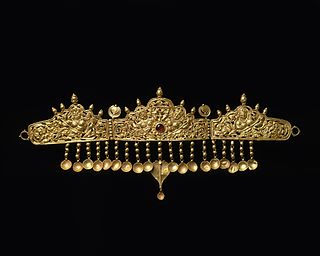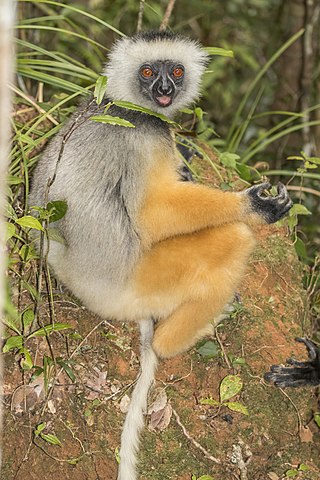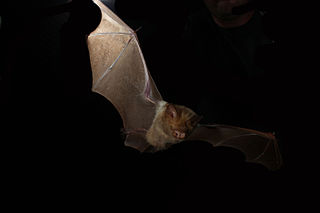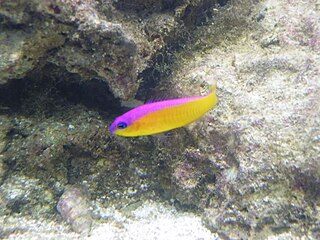
Diadema is a municipality in São Paulo state, Brazil. Belonging to the ABCD Region of Greater São Paulo, it is 17 km (11 mi) distant from São Paulo's central point. Initially part of São Bernardo do Campo, Diadema became a city of its own in 1959. The population is 426,757 in an area of 30.76 km2 (11.88 sq mi). The annual mean temperature in the city is 19.6 °C (67.3 °F). Its HDI is 0.790.

A diadem is a type of crown, specifically an ornamental headband worn by monarchs and others as a badge of royalty.

The Diadematidae are a family of sea urchins. Their tests are either rigid or flexible and their spines are long and hollow.

The Federal University of São Paulo is a university in the state of São Paulo, Brazil.

Diadema antillarum, also known as the lime urchin, black sea urchin, or the long-spined sea urchin, is a species of sea urchin in the family Diadematidae.

The diademed sifaka, or diademed simpona, is an endangered species of sifaka, one of the lemurs endemic to certain rainforests in eastern Madagascar. Along with the indri, this species is one of the two largest living lemurs, with an average weight of 6.5 kg and a total adult length of approximately 105 centimetres (41 inches), half of which is its tail. Russell Mittermeier, one of the contemporary authorities on lemurs, describes the diademed sifaka as "one of the most colorful and attractive of all the lemurs", having a long and silky coat. P. diadema is also known by the Malagasy names simpona, simpony and ankomba joby. The term "diademed sifaka" is also used as a group species designation formerly encompassing four distinct subspecies.

The New Caledonian lorikeet is a potentially extinct lorikeet endemic to the Melanesian island of New Caledonia.

Diadema setosum is a species of long-spined sea urchin belonging to the family Diadematidae. It is a typical sea urchin, with extremely long, hollow spines that are mildly venomous. D. setosum differs from other Diadema with five, characteristic white dots that can be found on its body. The species can be found throughout the Indo-Pacific region, from Australia and Africa to Japan and the Red Sea. Despite being capable of causing painful stings when stepped upon, the urchin is only slightly venomous and does not pose a serious threat to humans.

The plushcap is a species of bird in the tanager family Thraupidae and it is the only member of the genus Catamblyrhynchus.

The diadem leaf-nosed bat or diadem roundleaf bat is one of the most widespread species of bat in the family Hipposideridae. It is probably most closely related to Hipposideros demissus from Makira and to Hipposideros inornatus from the Northern Territory in Australia. Hipposideros diadema is found in Australia, Indonesia, Malaysia, Myanmar, the Philippines, Thailand, and Vietnam.

Pictichromis diadema, the bicolor dottyback, diadem dottyback, or purple-top dottyback is a fish species of the dottyback family. It is a popular aquarium fish species.
Orpecovalva acantha is a moth of the family Autostichidae. It is found on Sardinia.
Orpecovalva glaseri is a moth of the family Autostichidae. It is found in Spain.
Orpecovalva mallorcae is a moth of the family Autostichidae. It is found on the Balearic Islands in the Mediterranean Sea.

Costa Diadema is a Dream-class cruise ship owned by Carnival Corporation and operated by Costa Crociere. The ship was ordered in October 2012 and was delivered to Costa on 25 October 2014. At her time of delivery, Costa Diadema was the largest vessel to fly an Italian flag and Costa's largest vessel to date; she is currently Costa Crociere's flagship.

Diadema savignyi is a species of long-spined sea urchin belonging to the family Diadematidae. Common names include long-spined sea urchin, black longspine urchin and the banded diadem. It is native to the east coast of Africa, the Red Sea, the Indian Ocean and western Pacific Ocean. It was first described in 1829 by the French naturalist Jean Victoire Audouin. The specific epithet honours the French zoologist Marie Jules César Savigny who described many new marine species from the Mediterranean Sea and Red Sea. The type locality is Mauritius.

The red-naped snake is a small venomous reptile from the family Elapidae. The snakes are found in four Australian states and are listed as 'threatened' in Victoria'. They are nocturnal and feed on small skinks. The young eastern brown snake is similar in appearance.

The diademed amazon is a parrot in the family Psittacidae formerly considered conspecific with the red-lored amazon. Amazona diadema is restricted to the state of Amazonas in north-western Brazil.
Orpecovalva is a Palearctic of moths in the family Autostichidae.

Coronula diadema is a species of whale barnacle that lives on the skin of humpback whales and certain other species of whale. This species was first described by Carl Linnaeus in the 1767 12th edition of his Systema Naturae.














